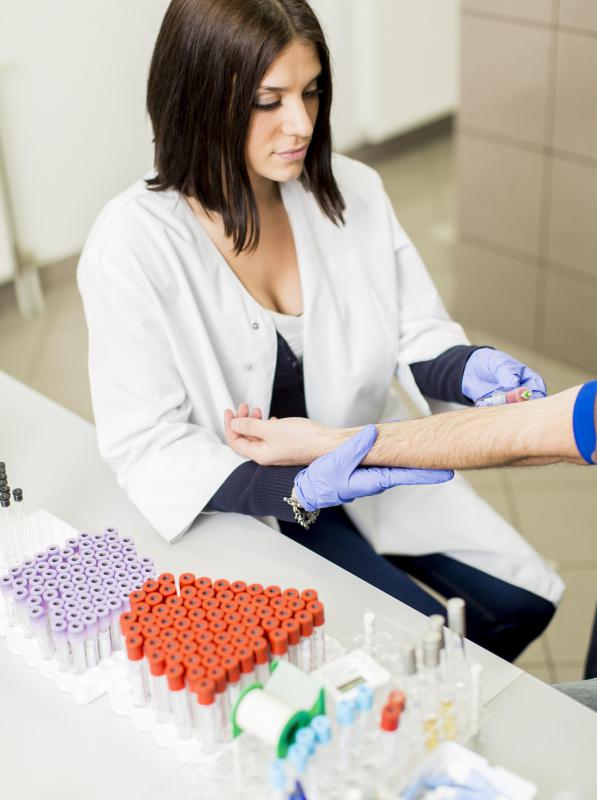At TheHealthBoard, we're committed to delivering accurate, trustworthy information. Our expert-authored content is rigorously fact-checked and sourced from credible authorities. Discover how we uphold the highest standards in providing you with reliable knowledge.
What is a Differential White Cell Count?
A differential white cell count is a test which measures the percentages of each type of white blood cell in the body. It is often incorporated in the request for a blood examination known as the complete blood count (CBC). The different white blood cells (WBC) measured in the count reports are neutrophils, lymphocytes, eosinophils, basophils, and monocytes. Their total percentages always have a sum of 100%.
A physician usually looks at the differential white cell count to assess a person's ability to fight off infection. It can also point to the presence of allergic reactions or parasitic infestations inside the human body. Infections caused by a virus or a bacteria can sometimes be gleaned from the increase of value in one of these cell types. Stages of leukemia are evaluated using the differential white cell count as well.

Each type of WBC is given a normal value in a differential white cell count report. Their values could be normal, decreased, or increased, depending on the state of health of the person whose blood is being examined. Blood is usually extracted in the laboratory by a phlebotomist. As soon as blood is extracted, it is processed to be read by the machine or examined manually under the microscope by a qualified medical technologist.

Neutrophils, or segmenters, make up the highest percentage of WBCs in the blood. An increase in value of these cells generally indicates the presence of an acute bacterial infection or some inflammation going on inside the body. Other conditions which can show an increase in neutrophils are leukemia, gout, and rheumatic fever. A decrease can point to aplastic anemia, or can be due to the body's response to treatment with various drugs.

An increase in the value of lymphocytes is mostly seen in patients with chronic bacterial infections or viruses. It is also seen in some patients with bone marrow cancer and after exposure to radiation. A decrease in lymphocytes is seen in patients with conditions such as lupus erythematosus, leukemia, and AIDS.
Eosinophils usually increase in the presence of parasites, allergies, and skin infections. An increase in basophils are seen in some leukemia cases, food allergies, and after radiation therapy. Monocyte levels also increase in most infections and inflammatory disorders, as well as certain malignancies like leukemia. A decrease in monocytes sometimes indicates an injury or cancer in the bone marrow.
AS FEATURED ON:
AS FEATURED ON:

















Discussion Comments
Chemotherapy treatment can result in a low white blood cell count. The chemo destroys some of the body's blood production cells along with the cancer cells because it targets rapidly growing cells, and normal cells that produce white and red blood cells grow rapidly. Signs a patient is experiencing a low white blood cell count include infections or fevers, while signs of a low red blood cell count include fatigue, dizziness, and paleness. Cancer patients on chemo are monitored for their blood counts and given medications to increase their blood cell count if their CBC (Complete Blood Cell Count) tests indicate a low count.
Post your comments